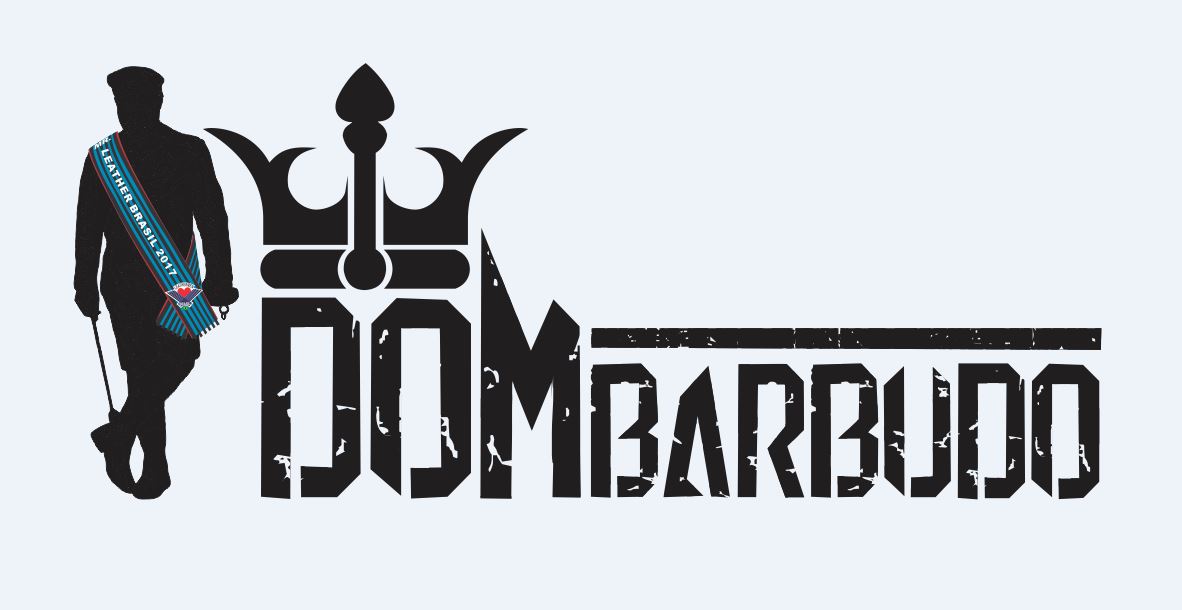📖 TERMO E CATEGORIA
QUEER – Conceito
🔑 PALAVRAS-RELACIONADAS
Identidade, Gênero, Sexualidade, Diversidade, Inclusão, Não-conformidade
🔠 DEFINIÇÃO
Queer é um termo usado para descrever uma ampla gama de identidades e experiências que desafiam ou não se encaixam nas normas tradicionais de gênero e sexualidade. Originalmente um termo pejorativo, “queer” foi ressignificado por ativistas LGBTQ+ e atualmente é usado para representar a fluidez de identidade de gênero e orientações sexuais não heteronormativas.
🔎 SIGNIFICADO
O termo queer abrange uma variedade de identidades que rejeitam ou contestam as normas de gênero e sexualidade convencionais. Ele não se limita a uma orientação sexual específica ou identidade de gênero, mas é frequentemente associado à resistência contra as expectativas normativas e à afirmação de uma identidade que é única e fluida. O termo pode se referir tanto a uma identidade pessoal quanto a uma forma de ativismo político.
🔗 APLICAÇÃO
Em um contexto social e político, o uso do termo queer pode ser visto como uma forma de desafiar a heteronormatividade, enfatizando a diversidade e a inclusão de todas as formas de expressão de gênero e sexualidade. Queer também pode ser uma identidade individual para aqueles que não se encaixam nas categorias tradicionais de gênero ou sexualidade, como “gay”, “lésbica”, “heterossexual”, etc.
🧠 IMPACTO MENTAL, FÍSICO E EMOCIONAL
Mentalmente, adotar uma identidade queer pode ser uma forma de libertação, permitindo que o indivíduo se expresse sem as limitações impostas pelas normas tradicionais. Fisicamente, a expressão queer pode envolver a modulação de aparência e comportamento para refletir uma identidade não-binária ou fluida. Emocionalmente, ser queer pode proporcionar uma sensação de comunidade, aceitação e resistência a pressões sociais opressivas.
📢 RELAÇÃO COM OUTROS TERMOS
O termo queer está intimamente relacionado com outras palavras da comunidade LGBTQ+, como “gay”, “lésbica”, “bissexual”, “transgênero”, “não-binário”, “pansexual” e “assexual”. Embora estes termos se refiram a orientações ou identidades específicas, o termo queer é mais abrangente, englobando todas as formas de resistência contra normas de gênero e sexualidade.
🔒 SIMBOLOGIA E REPRESENTAÇÃO NO BDSM
No contexto do BDSM, o termo queer pode se referir à rejeição de normas rígidas de gênero e sexualidade, celebrando a liberdade de expressão dentro dessas práticas. A ideia de “não-conformidade” dentro do BDSM ressoa com a identidade queer, onde as pessoas podem explorar suas preferências e expressões sem se submeter a rótulos ou expectativas sociais.
🤝 NEGOCIAÇÃO
Dentro das relações BDSM e mais amplamente na sociedade, negociar o uso do termo queer pode envolver o respeito pelas identidades de gênero e sexualidade fluídas de cada indivíduo. A negociação sobre identidade e expressão é fundamental para criar um ambiente seguro e inclusivo.
💊 CUIDADOS ANTES E DEPOIS
Antes de envolver-se em práticas queer ou discutir questões relacionadas à identidade queer, deve-se garantir que as partes envolvidas compreendam e respeitem as diferentes formas de expressão e as identidades fluidas. Após, a validação e o respeito pela identidade do outro são essenciais para manter um ambiente seguro e acolhedor.
🚀 IMPACTO FINAL
O termo queer é uma poderosa afirmação de identidade e resistência que desafia as normas sociais de gênero e sexualidade. Ele representa uma celebração da diversidade, da fluidez e da liberdade de ser, tanto no BDSM quanto em outras esferas da vida, promovendo a aceitação e a inclusão.
🔍 6 PERGUNTAS COMPLEMENTARES – QUEER
- Qual a diferença entre identidade queer e orientação sexual?
Identidade queer vai além de quem se deseja sexualmente. É um posicionamento político e existencial que questiona normas impostas de gênero, comportamento e afetividade. Um sujeito queer pode se atrair por qualquer gênero, mas o que define sua identidade é o rompimento com expectativas normativas e rótulos fechados. - Por que algumas pessoas rejeitam o termo LGBTQIA+ e preferem apenas se identificar como queer?
Porque o termo queer oferece liberdade. Ele não exige que a pessoa se encaixe em uma sigla específica ou defina seus desejos de forma estática. É uma palavra aberta, fluida, que abriga experiências complexas sem a necessidade de explicação. Para muitos, queer é resistência à categorização e à vigilância heteronormativa. - O termo queer é ofensivo? Ainda existe preconceito em seu uso?
Sim e não. Historicamente, “queer” era um insulto usado de forma depreciativa. Mas a comunidade se apropriou da palavra e a transformou em símbolo de orgulho e resistência. No entanto, seu uso ainda pode gerar desconforto em pessoas mais velhas ou em contextos conservadores, o que exige sensibilidade e respeito ao se comunicar. - Existe diferença entre ser queer e ser gay, lésbica ou bissexual?
Sim. Uma pessoa gay ou bissexual pode se identificar como queer, mas nem todo queer se define apenas por sua orientação sexual. Ser queer é mais amplo — inclui identidade de gênero, expressões afetivas, práticas sexuais e posicionamentos sociais que desafiam o padrão binário e heteronormativo. É um guarda-chuva que acolhe o dissidente. - Como o BDSM e o fetichismo se cruzam com identidades queer?
A vivência queer e o BDSM compartilham um ponto crucial: a recusa da norma. Muitos queer encontram no BDSM um espaço onde podem explorar prazer, poder e vulnerabilidade sem os limites morais impostos pelo mundo hétero. A prática fetichista, quando vivida de forma consciente e livre, é uma extensão da própria identidade queer. - Por que o termo queer incomoda tanto em ambientes normativos?
Porque ele representa desobediência. O queer não pede permissão, não se encaixa, não explica. É uma ameaça ao conforto das categorias rígidas. Ao se declarar queer, uma pessoa diz que recusa a lógica do “normal” e do “esperado” — e isso abala estruturas. O incômodo não vem da palavra, mas do que ela ousa afirmar: liberdade total.

📖 TERM AND CATEGORY
QUEER – Concept
🔑 RELATED WORDS
Identity, Gender, Sexuality, Diversity, Inclusion, Non-conformity
🔠 DEFINITION
Queer is a term used to describe a wide range of identities and experiences that challenge or do not fit traditional gender and sexuality norms. Originally a pejorative term, “queer” was redefined by LGBTQ+ activists and is now used to represent the fluidity of gender identity and non-heteronormative sexual orientations.
🔎 MEANING
The term queer encompasses a variety of identities that reject or contest conventional gender and sexuality norms. It is not limited to a specific sexual orientation or gender identity, but is often associated with resistance to normative expectations and the affirmation of an identity that is unique and fluid. The term can refer to both a personal identity and a form of political activism.
🔗 APPLICATION
In a social and political context, the use of the term queer can be seen as a way to challenge heteronormativity, emphasizing the diversity and inclusion of all forms of gender and sexual expression. Queer can also be an individual identity for those who do not fit into traditional gender or sexual categories such as “gay,” “lesbian,” “heterosexual,” etc.
🧠 MENTAL, PHYSICAL, AND EMOTIONAL IMPACT
Mentally, adopting a queer identity can be liberating, allowing the individual to express themselves without the limitations imposed by traditional norms. Physically, queer expression may involve modifying appearance and behavior to reflect a non-binary or fluid identity. Emotionally, being queer can foster a sense of community, acceptance, and resistance to societal pressures.
📢 RELATION TO OTHER TERMS
The term queer is closely related to other words in the LGBTQ+ community such as “gay,” “lesbian,” “bisexual,” “transgender,” “non-binary,” “pansexual,” and “asexual.” While these terms refer to specific orientations or identities, queer is more inclusive, encompassing all forms of resistance against gender and sexuality norms.
🔒 SYMBOLISM AND REPRESENTATION IN BDSM
In the context of BDSM, the term queer can refer to the rejection of rigid gender and sexuality norms, celebrating freedom of expression within these practices. The idea of “non-conformity” in BDSM resonates with queer identity, where individuals can explore their preferences and expressions without being subject to labels or societal expectations.
🤝 NEGOTIATION
Within BDSM relationships and more broadly in society, negotiating the use of the term queer may involve respecting the fluid gender and sexual identities of each individual. Negotiating identity and expression is essential to creating a safe and inclusive environment.
💊 PRECAUTIONS BEFORE AND AFTER
Before engaging in queer practices or discussing queer identity-related matters, it is important to ensure that involved parties understand and respect different forms of expression and fluid identities. Afterwards, validating and respecting each other’s identity is essential to maintaining a safe and welcoming environment.
🚀 FINAL IMPACT
The term queer is a powerful affirmation of identity and resistance that challenges societal norms of gender and sexuality. It represents a celebration of diversity, fluidity, and freedom to be, both in BDSM and in other spheres of life, promoting acceptance and inclusion.
🔍 6 COMPLEMENTARY QUESTIONS – QUEER (NON-HETERONORMATIVE TERM)
1. What’s the difference between a queer identity and sexual orientation?
Queer identity goes beyond who someone is sexually attracted to. It’s a political and existential stance that challenges imposed norms of gender, behavior, and affection. A queer person might desire any gender, but what defines their identity is the refusal to fit into rigid categories and expectations.
2. Why do some people reject the LGBTQIA+ acronym and prefer to identify simply as queer?
Because “queer” offers freedom. It doesn’t require someone to fit into a specific label or define their desire in fixed terms. It’s an open, fluid term that embraces complex experiences without needing justification. For many, queer is resistance to categorization and heteronormative surveillance.
3. Is the term queer offensive? Does prejudice still exist around its use?
Yes and no. Historically, “queer” was a slur used in derogatory ways. But the community reclaimed it, turning it into a symbol of pride and rebellion. Still, it can cause discomfort, especially for older generations or in conservative contexts — so it’s important to use it with awareness and respect for context.
4. Is there a difference between being queer and being gay, lesbian, or bisexual?
Yes. A gay or bisexual person can identify as queer, but not every queer person defines themselves solely by sexual orientation. Queer is broader — it includes gender identity, emotional expression, sexual practices, and social positions that challenge binary and normative frameworks. It’s an umbrella term for dissenters.
5. How do BDSM and fetishism intersect with queer identities?
Queer living and BDSM share a common thread: rejecting the norm. Many queer individuals find in BDSM a space to explore pleasure, power, and vulnerability without moral constraints from heteronormative culture. Fetish practice, when intentional and conscious, becomes an extension of queer identity — free, raw, and unapologetic.
6. Why does the term queer make norm-driven environments uncomfortable?
Because it represents disobedience. Queer doesn’t ask permission, doesn’t conform, doesn’t explain. It threatens the comfort of rigid categories. Declaring oneself queer means refusing the logic of “normal” and “expected” — and that shakes foundations. The discomfort isn’t in the word itself, but in its radical affirmation of freedom.







